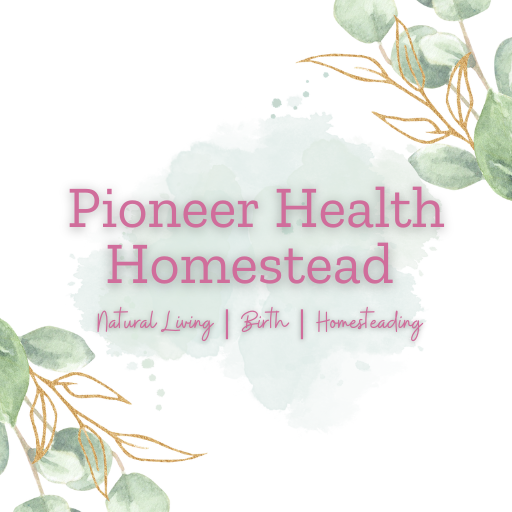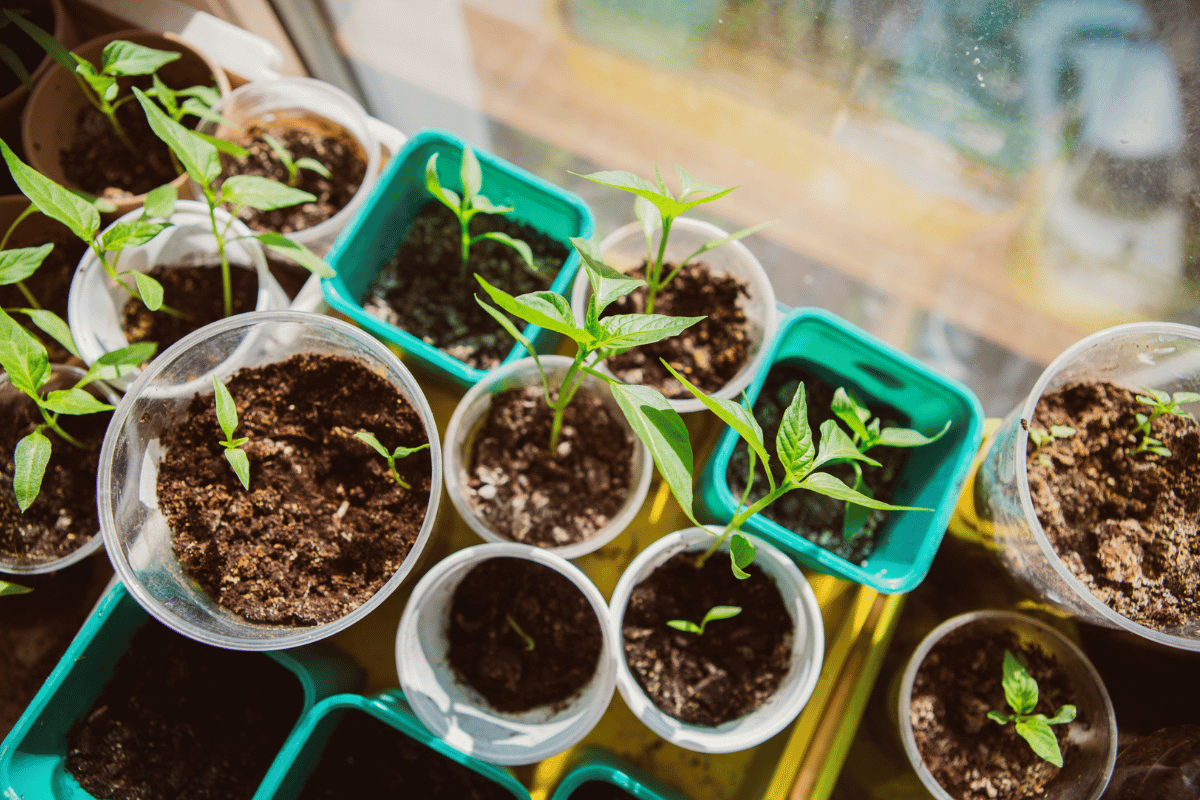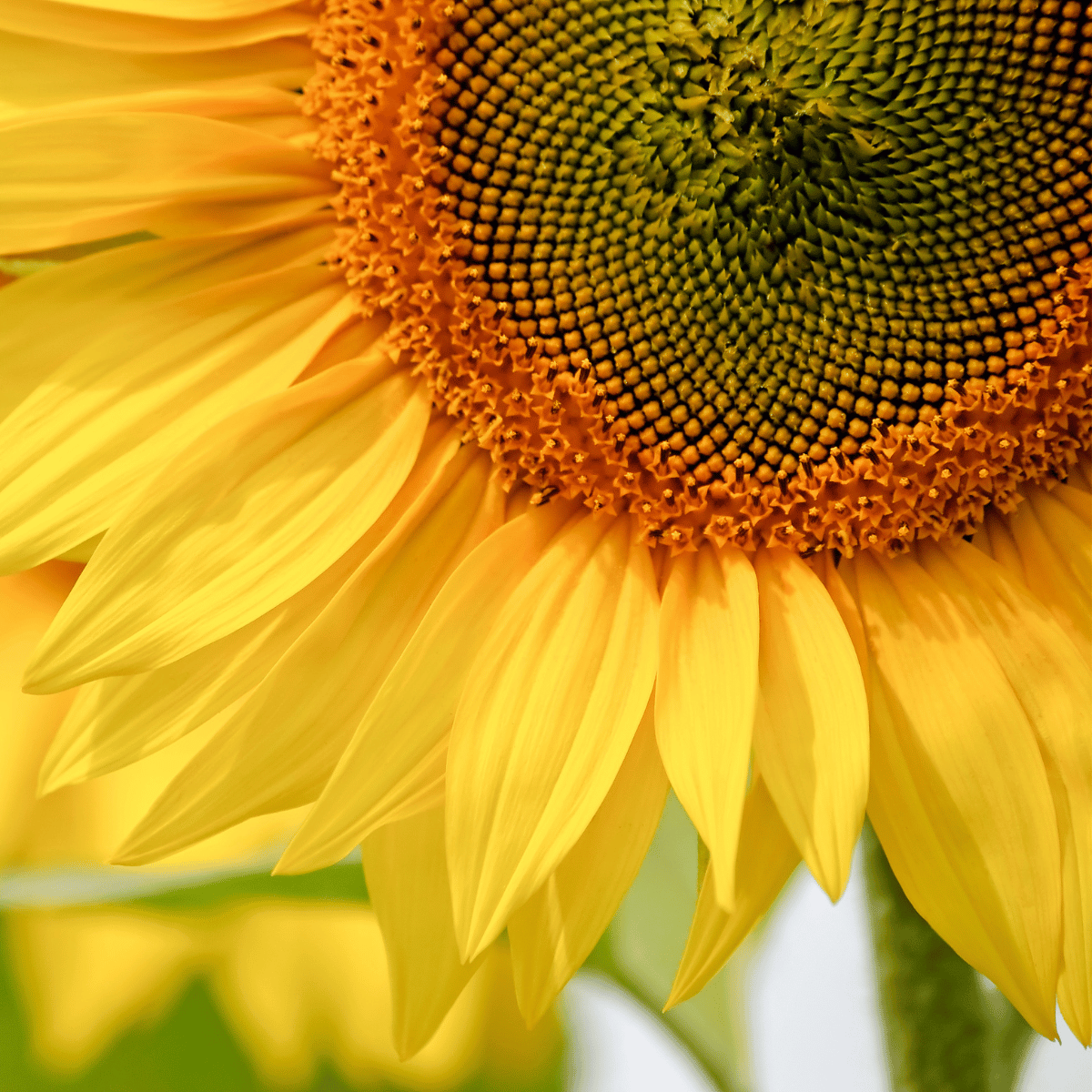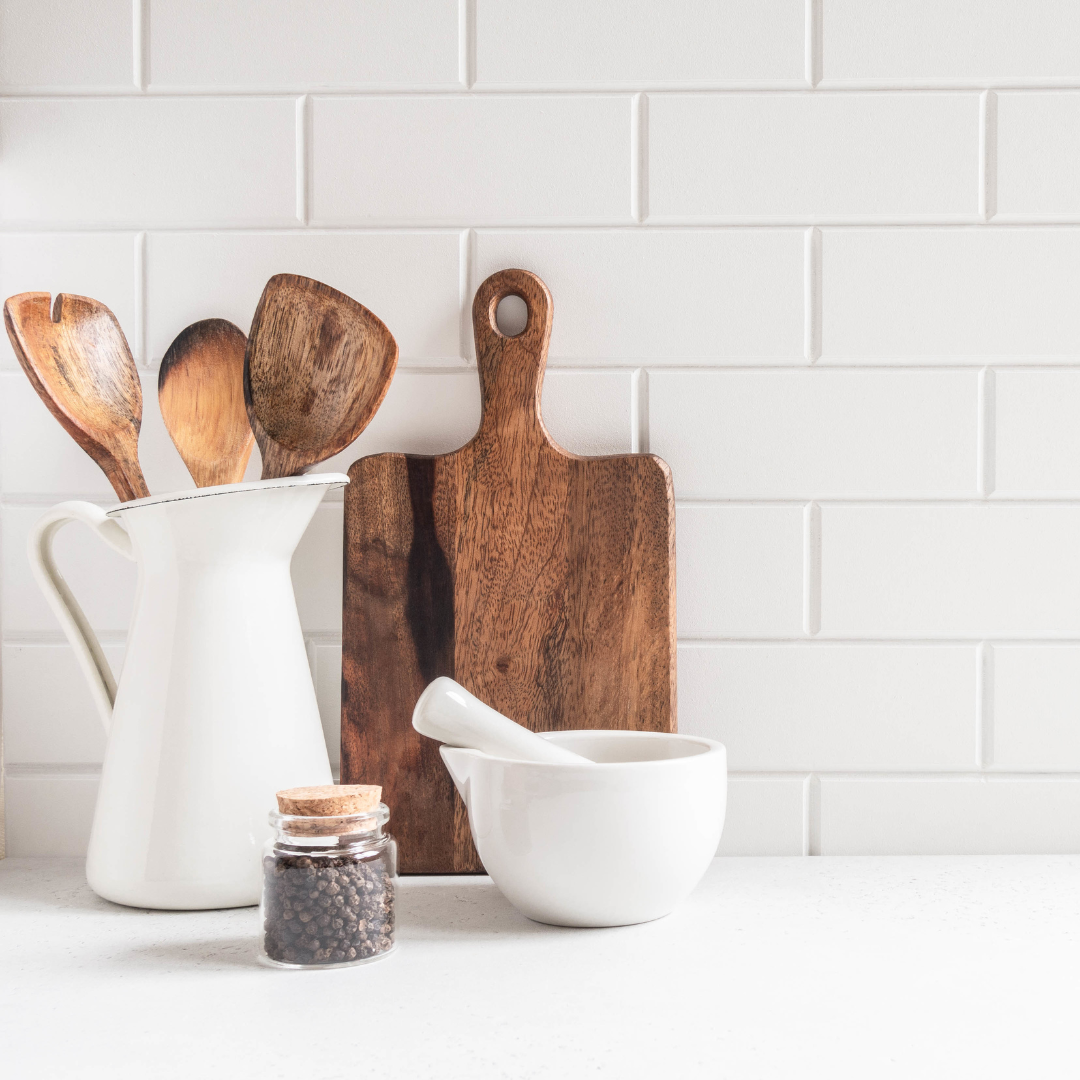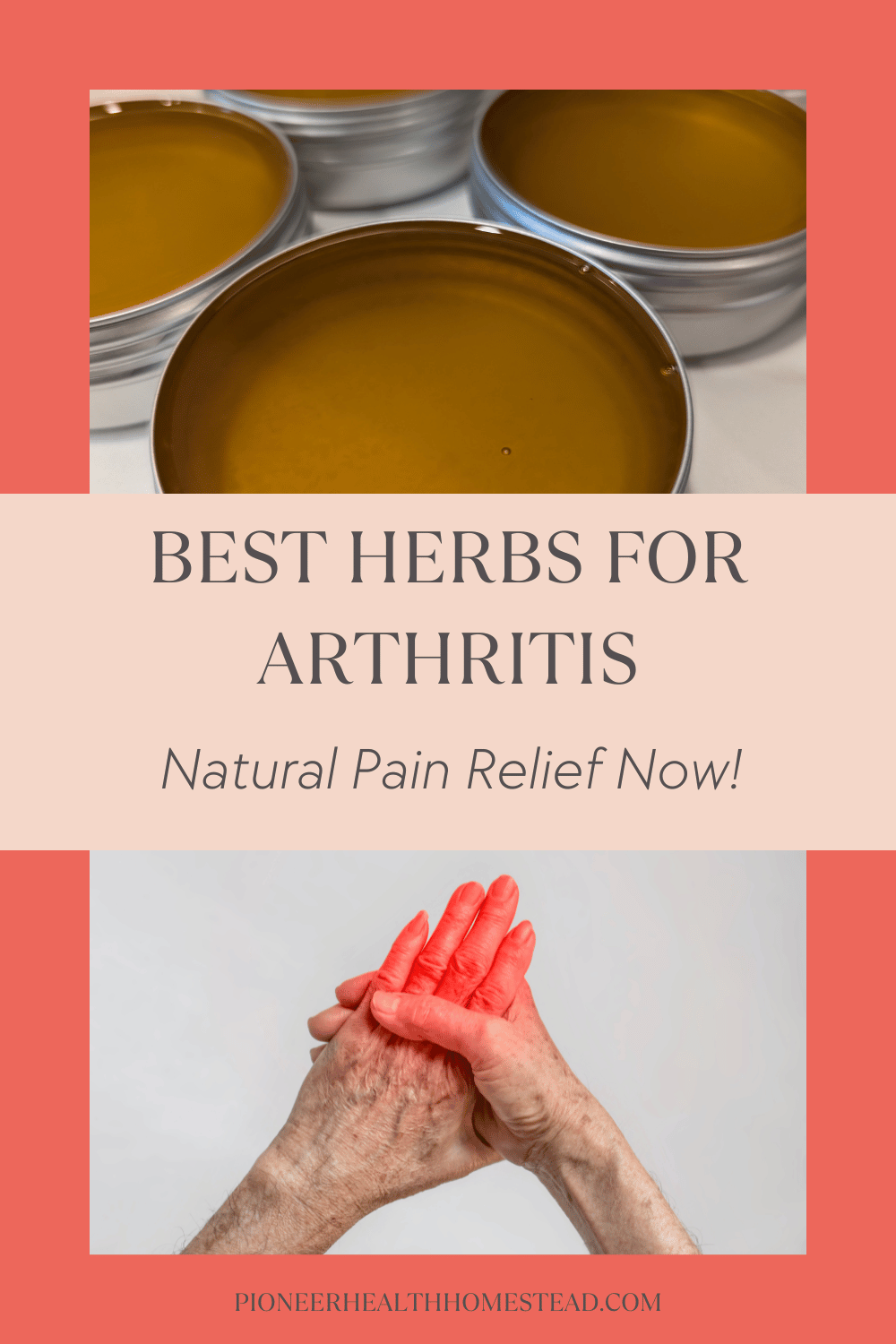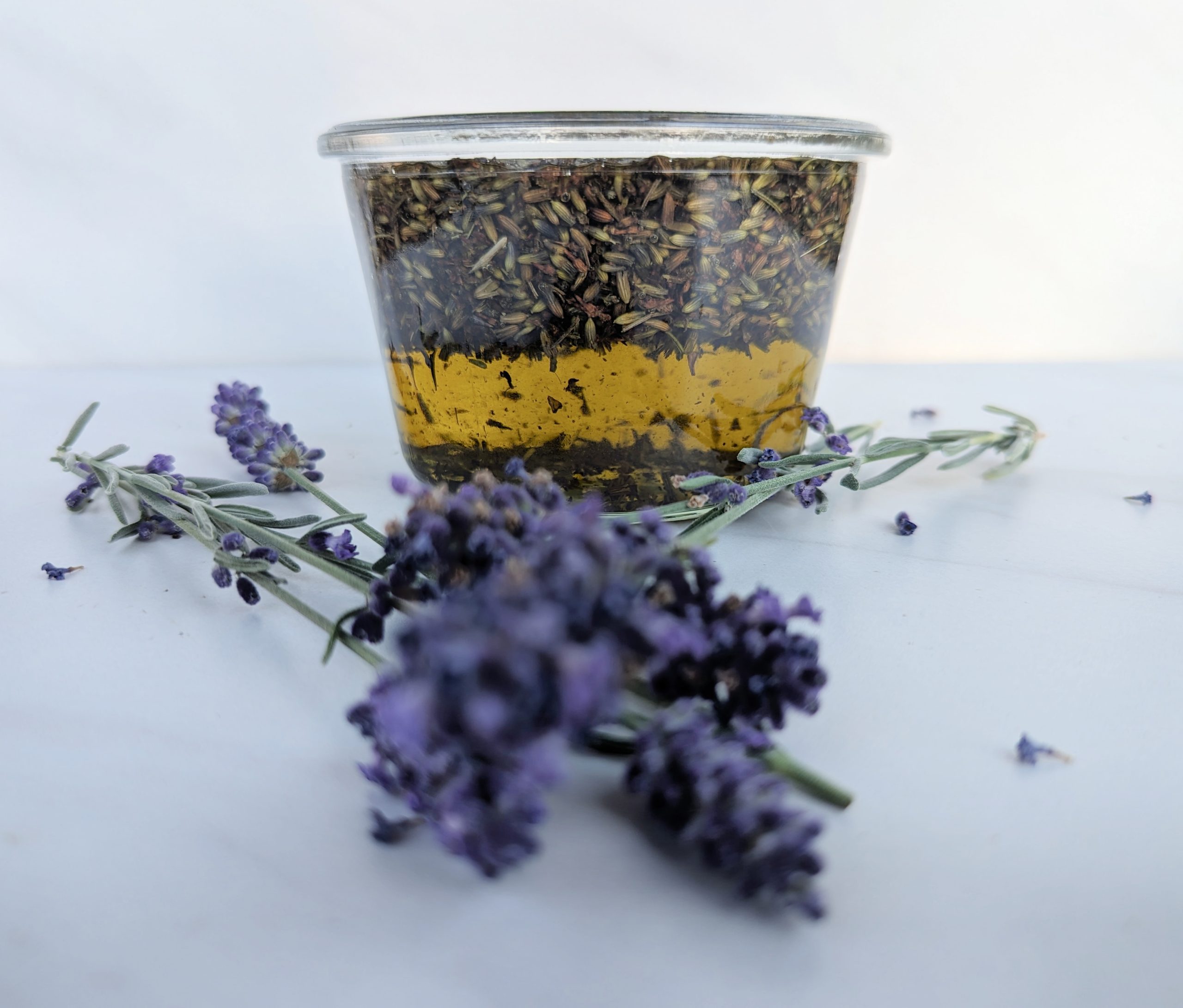Top 20 Best Medicinal Herbs to Grow for Beginners
These are the top 20 best medicinal herbs to grow for beginners. Beginning to cultivate your own medicinal herb garden can be a rewarding and empowering experience. Not only does it provide a sustainable source of natural remedies, but it also allows you to utilize medicinal plants and culinary herbs with ease. Whether you’re a seasoned gardener or a novice, these top 20 best medicinal herbs to grow for beginners will not only enhance the beauty of your garden but also contribute to your overall health and well-being.
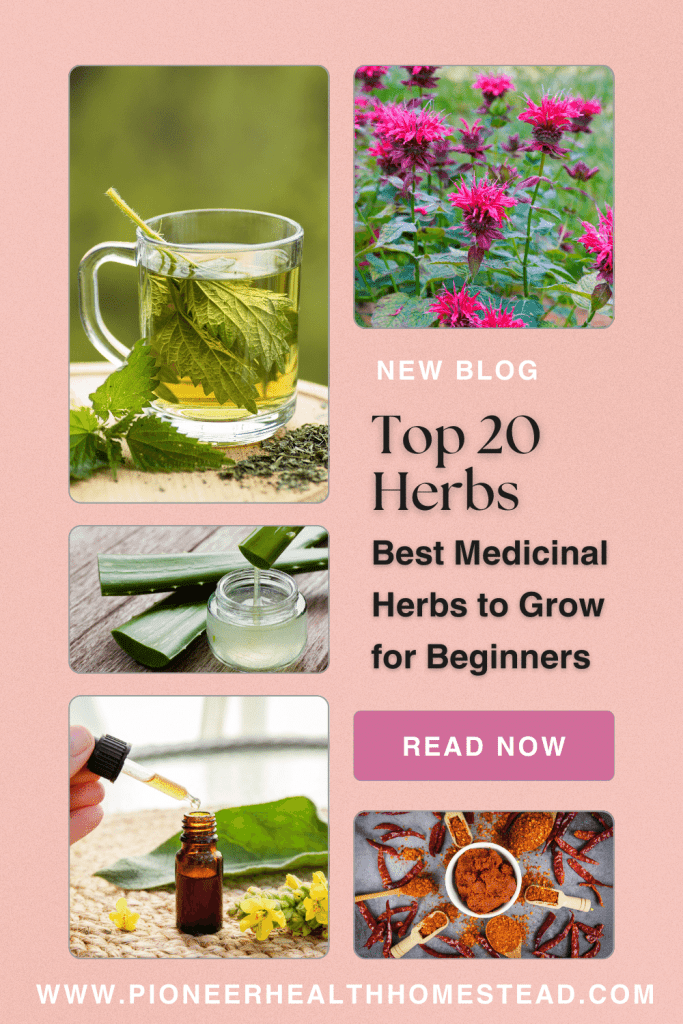
While I am a registered nurse (RN, BSN), I am not a medical doctor. This information is not to be used as medical advice. Please take this education and speak with your healthcare provider before taking these herbs.
As an Amazon Associate, I earn from qualifying purchases. This post contains affiliate links, which means I make a small commission at no extra cost to you. You can view our privacy policy here.
The top 20 best medicinal herbs to grow are listed below with their common names and Latin names. I grow most of these in my medicinal garden to use as herbal medicine throughout the year. Many of these can also be used as culinary herbs as both fresh and dried leaves. Some of these herbs are perennial plants and others are annuals.
Why grow your medicinal herbs?
Growing these herbs within your vegetable garden will aid in pollination as most of these will bring in pollinators from their beautiful flowers. Buying seed packets online or at your local nursery makes this a very simple way to save money while also growing fresh herbs for your home remedies.
Many of these herbs are easily available at a local grocery store but they will not have been picked at peak ripeness and you will not have had control over their cultivation.
1. Elderberries
Elder (Sambucus canadensis, Sambucus nigra) is a perennial shrub that can be found growing along hedgerows, forest perimeters, and in gardens as an ornamental. Both the elderberry and the elderflower are used medicinally, in jams/jellies and even wine.
The most popular herbal cold and flu remedy. Elderberries can help lower fevers by inducing sweating (diaphoretic) and have antiviral properties. The elderberry is phenomenal at treating viral infections such as colds, cases of flu, herpes, and shingles. They’re also used for treating upper respiratory infections (URIs). There is also some research showing anticancer properties as well.
They have Vitamin A, and C, bioflavonoids, flavonoids, phenolic compounds, beta-carotene, iron, potassium, and phytosterols.
Unfortunately, all parts of the fresh plant are mildly toxic and can cause nausea and diarrhea. The stems, bark, and root contain enough residual compounds even dried, to induce nausea.
How to Grow: Elderberries thrive in well-drained soil and a sunny spot in your garden. Plant them in the spring, keeping adequate space between each bush. Regular pruning encourages new growth, and mature bushes can yield berries within 2-3 years.
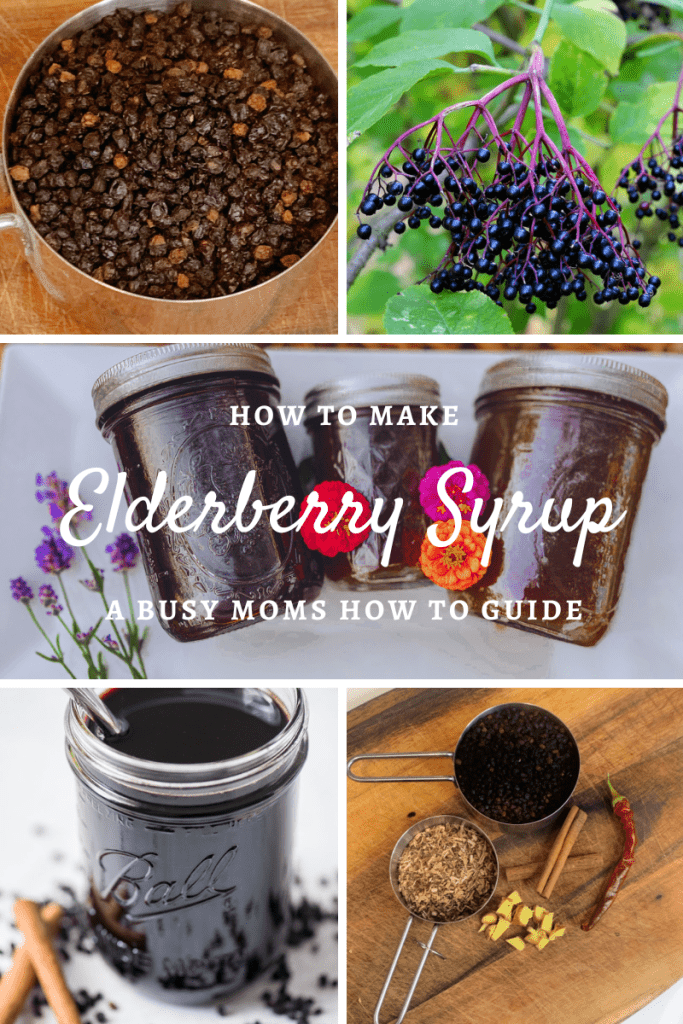
2. Oregano
Oregano (Origanum vulgare) is a typical staple in any kitchen, oregano is a powerful antifungal, antimicrobial, and expectorant. It is useful for respiratory infections and your gastrointestinal system. Oregano is also used for fungal infections, coughs, tonsillitis, bronchitis, asthma, and chest congestion.
One way to use oregano is that it can be added to a bath or shower to help clear your lungs. Oregano can also be made into a tincture and glycerite.
Oregano should be used sparingly and in low quantities while pregnant. The essential oil can become toxic to your liver, and you should only use topically for up to 7 days and then take a break for at least 72 hours before resuming use.
How to Grow: Oregano prefers well-drained soil and full sun. It’s a hardy herb that can be started from seeds or cuttings. Ensure good air circulation to prevent mildew, and harvest the leaves once the plant reaches a height of 4-6 inches.
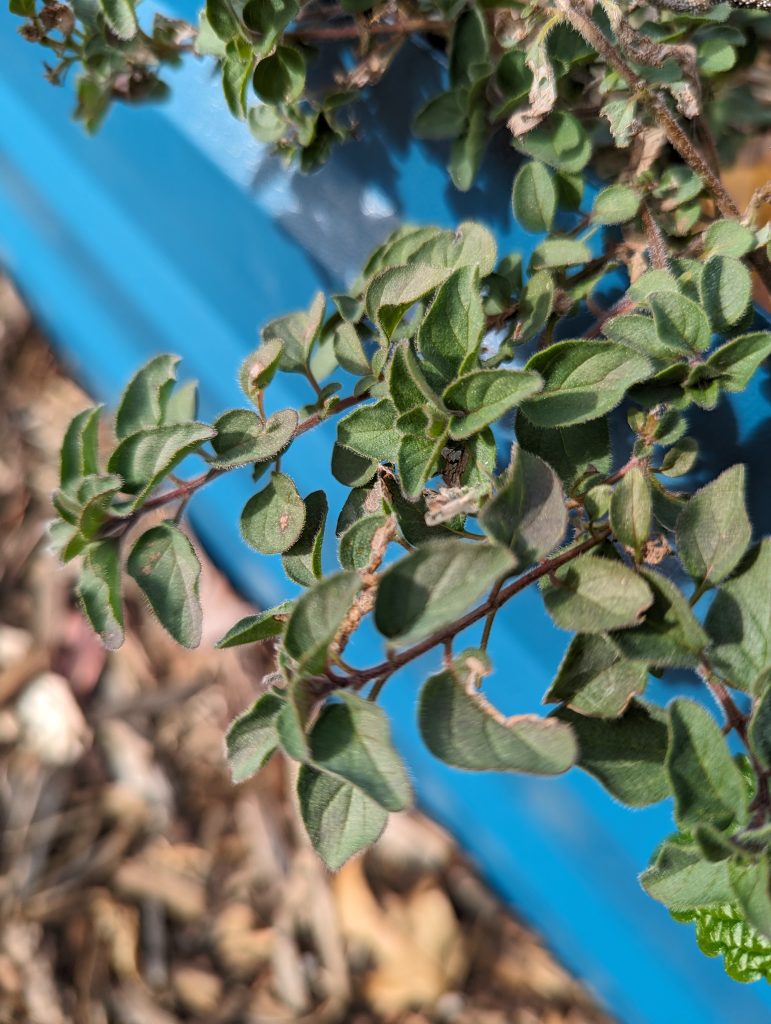
3. Holy Basil (Tulsi)
Holy Basil (Ocimum sanctum) is considered to be an adaptogen and tonic herb. This herb is multifaceted with its healing properties. It is also an antiviral, antibacterial, antispasmodic, analgesic, fever reducer, anti-inflammatory, hypotensive, and carminative properties. It enhances digestion, cerebral circulation, concentration, and memory, while also strengthening mental acuity. There is also some research that holy basil can help to lower blood sugar levels. Research in India has shown it to assist in lowering blood pressure and having anti-inflammatory, analgesic, and fever-reducing effects. Holy basil is also shown to inhibit sperm production.
The parts used are the leaves of the plant.
Do not take during pregnancy or while trying to conceive.
Holy basil can be made into a tea, a standard infusion of 4-8 oz 3 times daily. Taken as a tincture 2-4 ml 3 times a day.
How to Grow: Basil loves warmth and sunlight. Plant it in well-drained soil, and water it consistently. Pinch off the tips regularly to encourage bushier growth. Consider growing basil in pots for easy mobility.
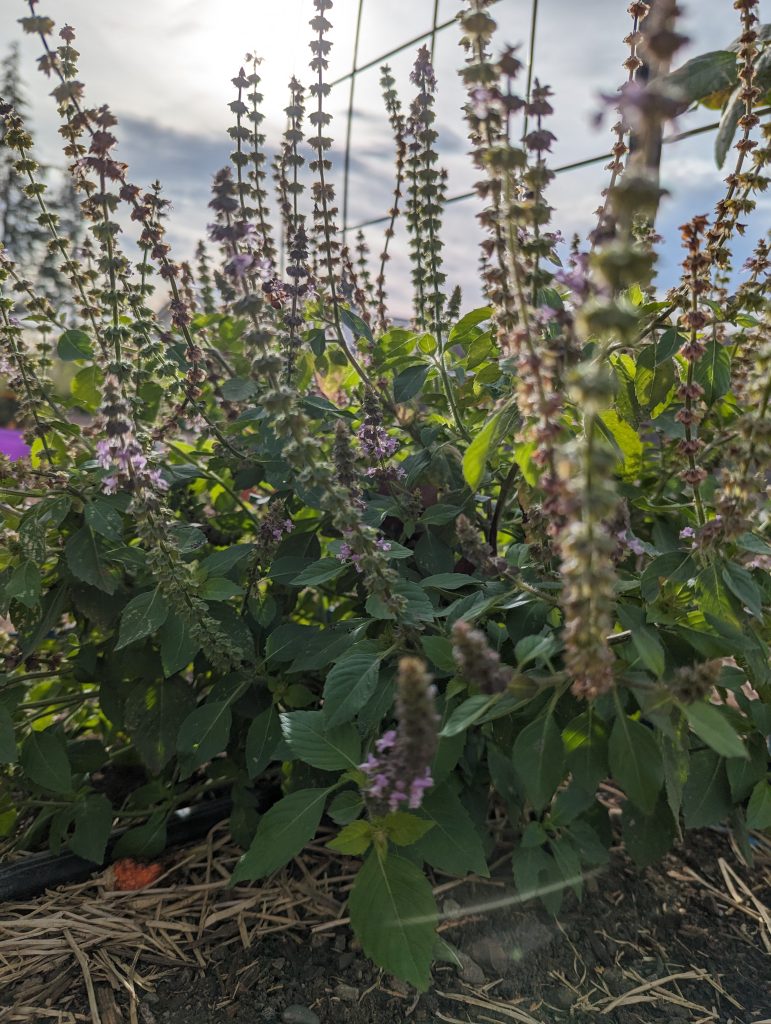
4. Thyme
Thyme (Thymus vulgaris) is a very powerful remedy for infections of different types. It is specifically used for the lung and digestive tract. If thyme is applied topically, it can aid in insect bites, stings, and minor analgesic effects. Thyme is considered antibacterial, antifungal, antiviral, aromatic, carminative, decongestant, emmenagogue, and circulatory stimulant.
Avoid large doses in pregnancy (culinary is considered safe).
Thyme can be taken as a standard infusion of 2-4 oz 3 times daily, tincture 10 drops – 4 ml 3 times daily, and topically as an essential oil that can be used orally or vaginally for yeast infections.
How to Grow: Thyme prefers well-drained soil and can tolerate dry conditions. It’s best started from seeds or cuttings. Trim the plant regularly to maintain its shape, and harvest the leaves as needed.
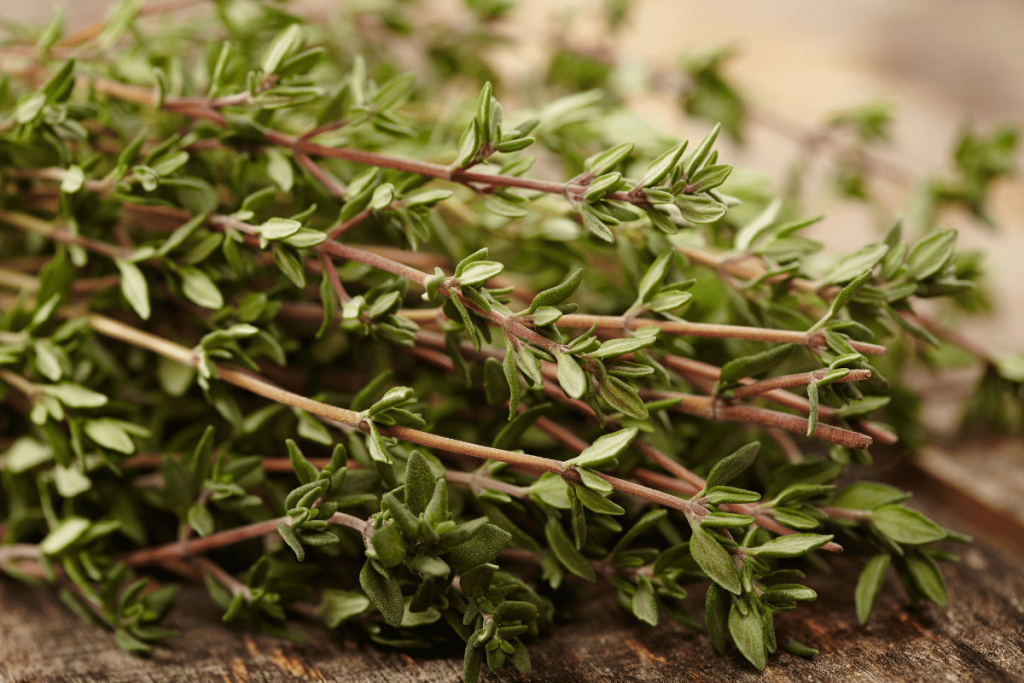
5. Rosemary
Rosemary (Rosemarinus officinalis) is another culinary herb that has strong medicinal properties. It has antioxidant, antirheumatic, antiseptic, carminative, cerebral tonic, and expectorant properties.
A study in 2011 found that rosemary exerted anti-inflammatory properties and protective effects on the inner lining of blood vessels. Another study in 2006 showed that rosemary could raise blood pressure in those with hypotension (low blood pressure).
The parts used are the leaves of the plant.
Do not take the essential oil internally except under a professional practitioner’s supervision.
Can take a weak infusion of 1 cup up to 3 times daily. Tincture is 10 drops to 3 ml up to 3 times daily. Capsule is 500-1500mg up to 3 times daily. Topical use prepared as a salve can be applied as needed. The essential oil can be used neat or diluted on the skin or added to salves, oils, and ointments. Diffuse the essential oil to improve concentration as well.
How to Grow: Rosemary thrives in well-drained, sandy, and rich soil and full sunlight. It’s a hardy perennial but benefits from protection in harsh winters. Prune regularly to maintain shape, and propagate through cuttings.
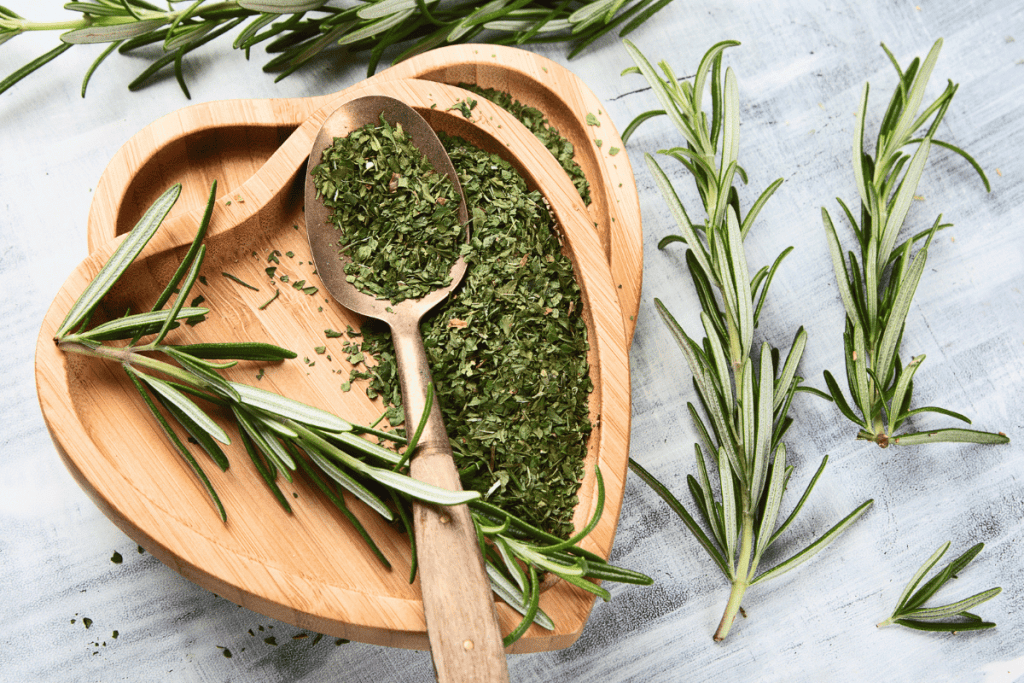
6. Chamomile
Chamomile (Chamaemelum nobile, Matricaria recutita, and related species) is most commonly known to many as a tea that aids in relaxation. It is a mild sedative and a good gastric anti-inflammatory. It calms nerves, settles the stomach, and helps expel gas.
Chamomile is very good for use in infants and children as a tea to treat cholic, hyperactivity, teething, fussiness, fever, or irritability. It can also be applied topically for inflammation.
Parts used are the flower although the leaf can also be used.
Can be used internally as a standard infusion (tea), tincture, and glycerite.
Allergic reactions are not common but possible.
How to Grow: Chamomile prefers well-drained soil and partial sunlight. It’s easily grown from seeds and requires regular watering. Harvest the flowers when they are fully open for the best medicinal properties.

7. Peppermint
Peppermint (Mentha piperata) renews, refreshes, and energizes while also soothing effects on the nervous and gastrointestinal systems. Needless to say, peppermint is a versatile herb. It is widely used in products such as toothpaste, mouthwash, and chewing gum.
Peppermint is an antispasmodic and helps settle the stomach, reduce stomach cramping and spasms, and expel gas, anti-emetic, diaphoretic, and a mild palliative effect on colds, and fevers. Combined with lavender, it is useful for burns and headache relief.
The parts used are the leaf and flower.
Peppermint can increase heartburn and other gastrointestinal reflux symptoms. It should be used sparingly, if at all while breastfeeding.
How to Grow: Peppermint is a fast-growing herb that thrives in moist, well-drained soil. Plant it in partial shade to prevent scorching. Regular harvesting promotes bushier growth, and it can be grown in pots to control its spread.

8. Sage
Sage (Salvia officinalis) is a common culinary herb that packs a powerful punch when used medicinally. It is antiseptic, antidiaphoretic, aromatic, carminative, emmenagogue, and nervine. Sage is helpful for colds and fever. It can also be used for sore and hoarse throat and laryngitis and gargled with for a sore mouth and throat. When used topically, it can help prevent infection and inflammation in wounds as an antiseptic.
The parts used are the leaves of the plant.
Do not take this herb medicinally while pregnant or breastfeeding. Sage can dry up breast milk.
Taken as a standard infusion of 4-8 oz 3 times daily. Tincture of 1-2 ml 2-4 times daily. Capsules of 500-1000 mg 2-3 times daily or 1000-2000 mg at bedtime to aid in night sweats.
How to Grow: Sage prefers well-drained soil and full sunlight. It’s a hardy perennial that benefits from pruning to encourage new growth. Propagate through cuttings or seeds, and avoid overwatering.
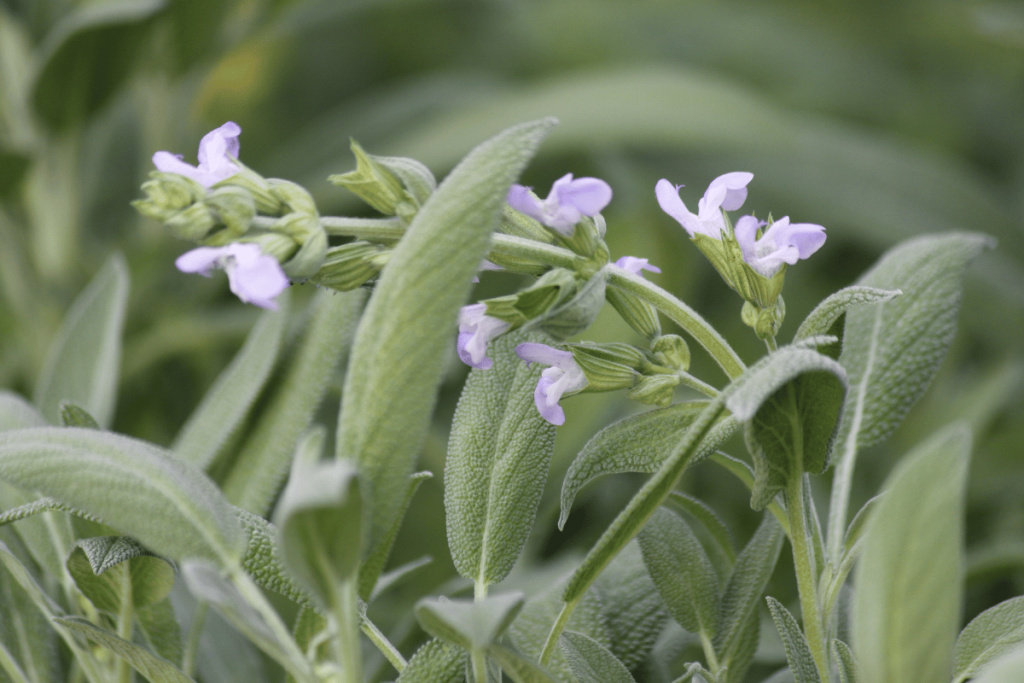
9. Lavender
Lavender (Lavandula officinalis, syn. L. angustifolia) is a beautifully aromatic herb and is best known for its relaxing properties. It relaxes the nervous system and eases tension and anxiety. Lavender is effective as a mild antidepressant and has a mild analgesic effect. It can help ease headaches and migraines. The essential oil can be used for antifungal and burn remedies.
Alone or with tea tree oil, it can applied directly to the skin to treat ringworm and nail fungus. It’s also been used well as an antispasmodic to help calm intestinal spasms from irritable bowel syndrome (IBS) and Chron’s disease.
The flowers are used primarily but the leaves can also be used.
This can be used in a standard infusion (best for headaches and migraines), tincture, essential oil, and salves.
Lavender is considered safe but should not be consumed while pregnant.
How to Grow: Lavender loves well-drained, alkaline soil and full sunlight. Plant it in raised beds to improve drainage. Prune in late winter or early spring to promote new growth and harvest the flowers for various uses.
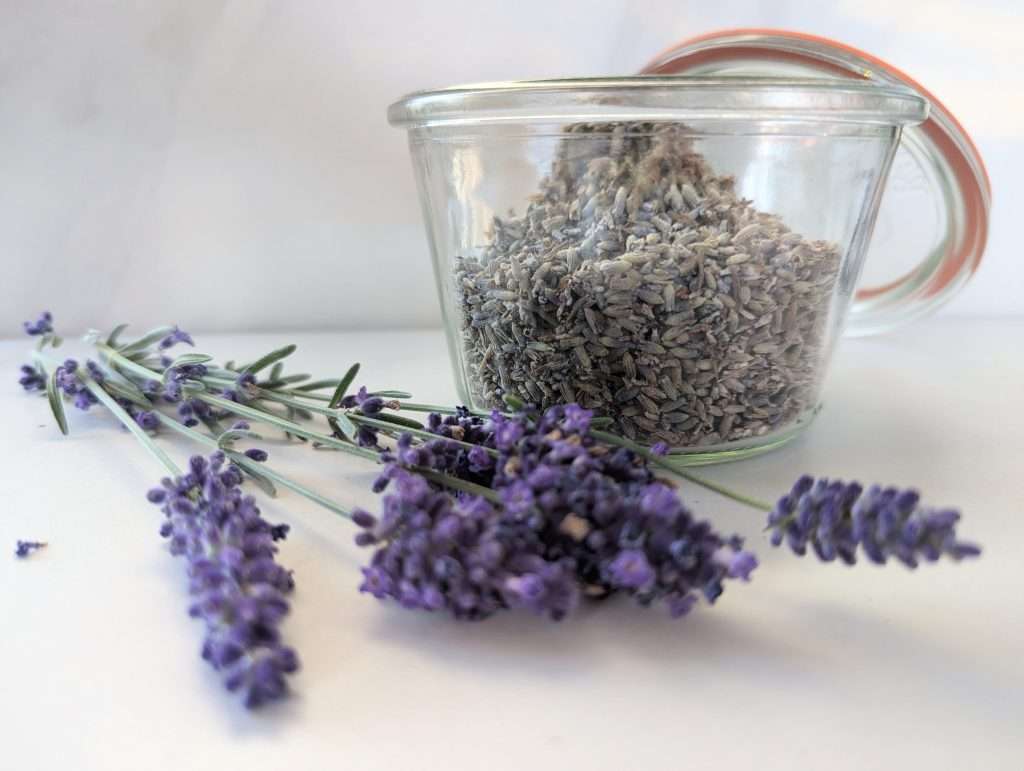
10. Calendula
Calendula (Calendula officinlis) Is very commonly used topically in salves for healing tissues after injuries, burns, and bruises. It is also a useful remedy for dry skin, eczema, and hemorrhoids and can ease mild pain. Less commonly known, it is great for gastrointestinal inflammation and is almost specific for Chron’s disease, colitis, and gastritis.
The flower is known for its healing effects promoting cell repair and growth. It is also noted to be antiseptic and anti-inflammatory and able to help prevent infections.
Calendula is one of the best herbs for cleansing the lymphatic system, thus amazing for treating swollen glands. It works by stimulating lymphatic drainage and moving congestion out of the body.
The parts used are the flowers.
Used in standard infusions, tinctures, glycerites, salves, or liniments.
Internal use is contraindicated in pregnancy but completely safe topically.
How to Grow: Calendula is an easy-to-grow annual that prefers well-drained soil and full sunlight. Sow seeds directly in the garden in the spring. Regular deadheading encourages continuous blooming.
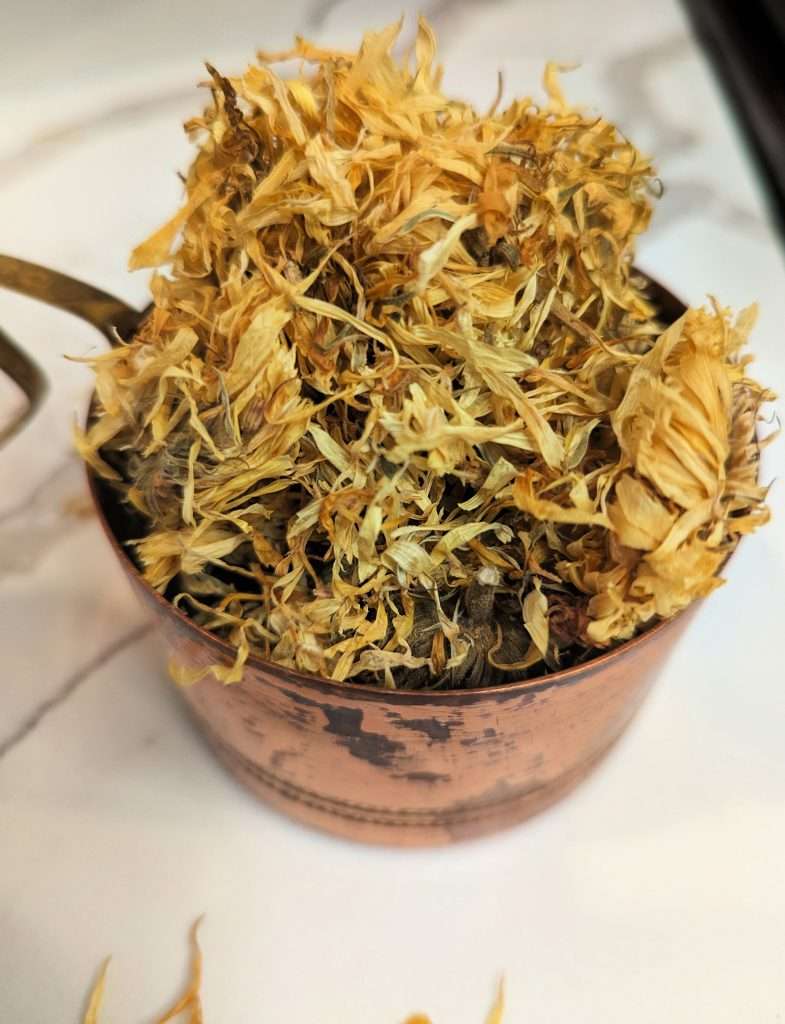
11. Aloe Vera
Aloe vera (Aloe vera, syn. A. barbadensis) is most notably known for use after a sunburn. This succulent is a must-have for its soothing properties. The juice and gel are made from the inner pulp of the aloe vera leaf. It not only aids in soothing sunburns, but also irritated skin, mucous membranes, and other damaged tissue. The juice can build the immune system to help fight infections and even AIDS, cancer, and other degenerative diseases.
The outer leaf contains properties that are used as a strong laxative.
The parts used are the inner pulp of the aloe vera leaf: juice and gel.
Some herbalists do not recommend children, elderly, or pregnant women to drink aloe vera juice as it may cause diarrhea if any of the green outer leaf portion is contained in it.
Use fresh cut leaf and cut to expose the gel. Apply it topically as needed for skin irritation and sunburns. Capsule 250-450 mg of the leaf extract daily for laxative use. Do not use long-term. Juice pulp 1-4 oz daily.
How to Grow: Aloe Vera thrives in well-drained, sandy soil and bright sunlight. Plant it in pots with proper drainage. Water sparingly and allow the soil to dry out between waterings.
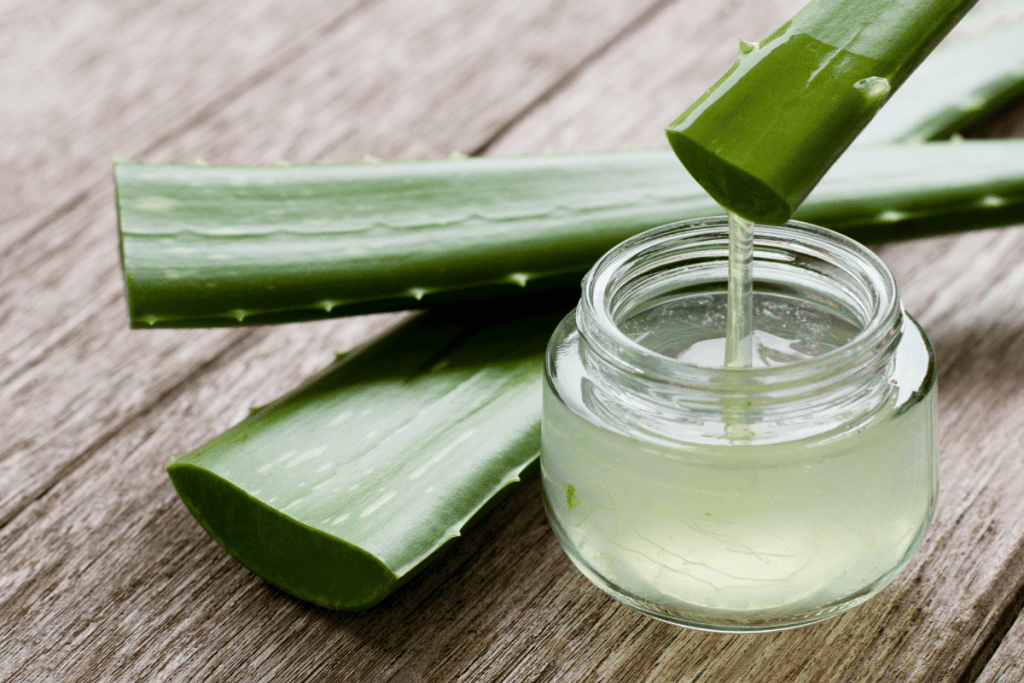
12. Garlic
Garlic (Allium sativum) is by far my favorite herb to have in my kitchen and medicinal herb arsenal. Not only does everything taste better with garlic, but it improves your health! It is a strong aromatic that acts as an expectorant to expel phlegm from the lungs and as a circulatory tonic to lower high blood pressure. To treat hypertension, it must be taken daily for 3-6 months to see its full effects.
Garlic is also a go-to choice for treating colds, flu, sore throats, and poor or sluggish digestion. It stimulates the production of white blood cells (WBCs) thus boosting your immune system, and its sulfur compounds and essential oils make it a potent internal and external antiseptic, antibacterial, and antimicrobial agent effective for treating many different types of infections.
The bulb and scapes (hard neck variety) are used.
Can take as a fresh herb or capsule.
Garlic does come with some caution but is usually considered safe. For some, it can be too much “fire” for their system to handle. In children, it can sometimes irritate their stomachs. If you’re breastfeeding and notice your infant becomes fussy afterward, you may want to avoid it. It can also burn the skin when applied topically.
How to Grow: Garlic prefers well-drained, fertile soil and full sunlight. Plant individual cloves in the fall, and harvest when the leaves start to yellow. Cure the bulbs in a cool, dry place.

13. Lemon Balm
Lemon balm (Melissa officinalis) is one of my favorite herbs in the garden. It is an aromatic herb with a slight lemon scent. It has a mild astringent action and is useful for many acute illnesses such as colds, digestive upset, and the flu. Use it topically as an antiviral for cold sores (herpes) and shingles.
My father-in-law has walked through my garden on several occasions to pick a couple of leaves and eat to calm his stomach.
Parts of the plant used are the leaves.
No known warnings for this herb.
As an infusion take 4-8 oz 1-4 times a day. Tincture take 2-5 ml 3 times daily.
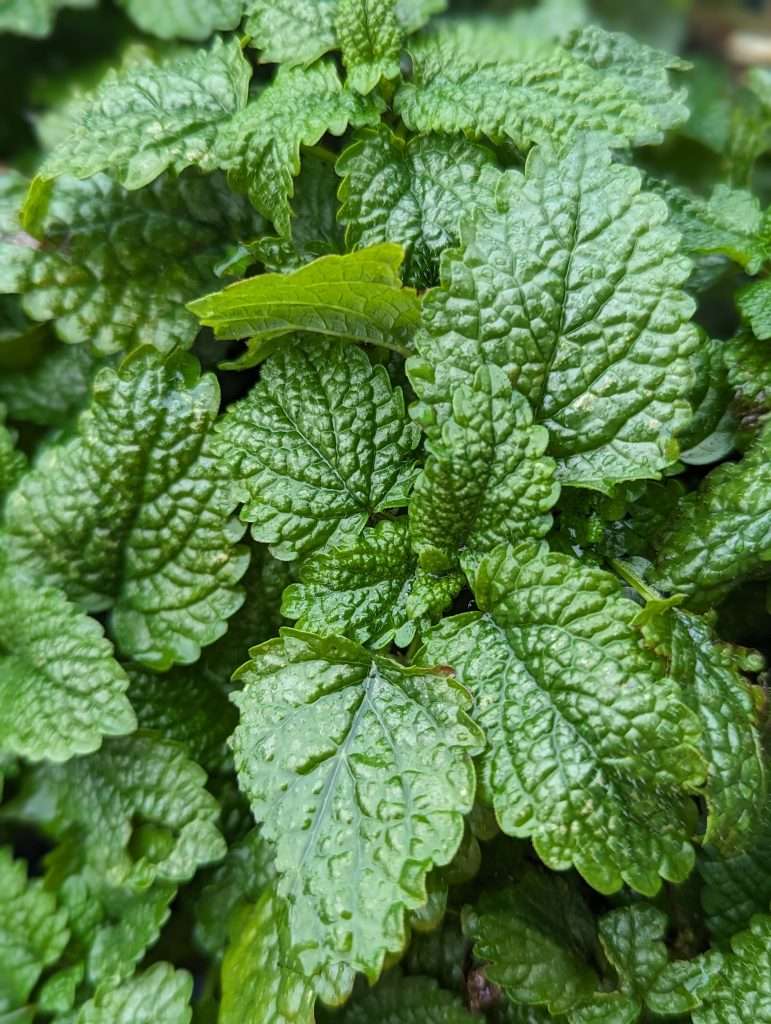
14. Yarrow
Yarrow (Achillea millefolium) is known for its ability to promote clotting (hemostatic properties) and reduce bleeding. It has a history of being used in wars in ancient times to stop bleeding. They would apply the leaves to the wounds. Yarrow can also be taken internally to aid in stopping internal bleeding. It also has anti-inflammatory and diaphoretic properties.
The parts used are the leaves of the plant.
Do not use yarrow while pregnant.
How to Grow: Yarrow is hardy and adaptable, growing in various soils and light conditions. Plant it from seeds or divisions in the spring. Water sparingly, as yarrow thrives in drier conditions.
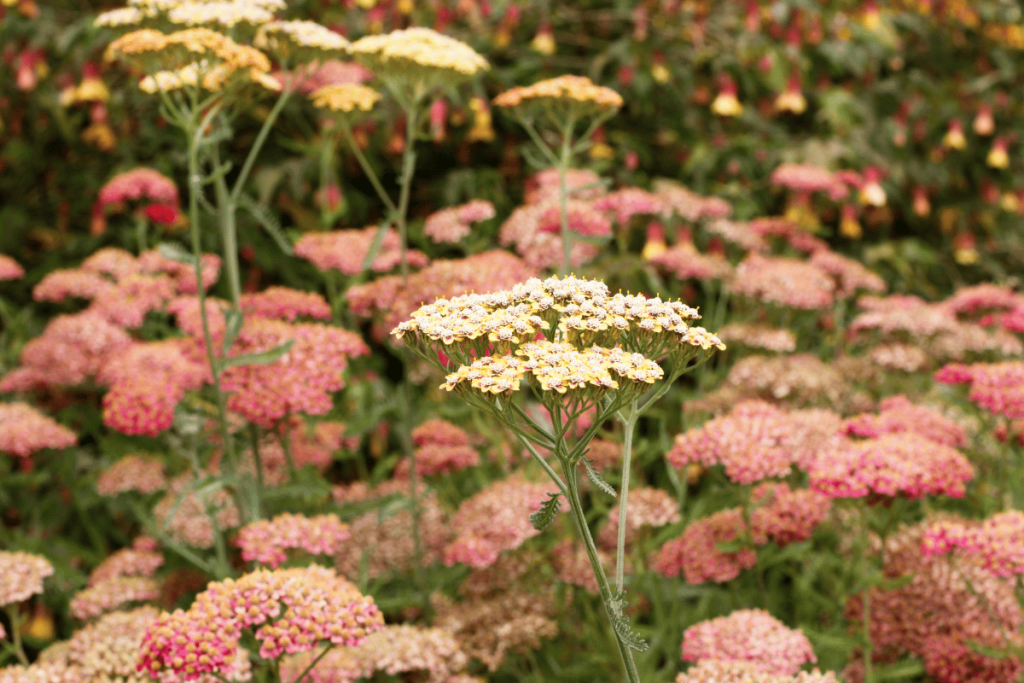
15. Bee Balm (Wild Bergamot)
Bee Balm (Monarda didyma) also known as wild bergamot, is in the mint family and is easily cultivated in your garden. This herb will also attract hummingbirds, bees, and butterflies. It is a perennial plant that grows easily in North America. Bee balm has antiseptic properties, bee balm is often used to treat colds and respiratory issues. It is also used as a mild diuretic to help with fevers. Bee Balm is like most mints and it aids in nausea, vomiting, flatulence, and stomach problems by its soothing effects. Bee balm also works similar to lemon balm in that it helps calm your nerves. It is good for stings, scrapes, and rashes when used in salves.
This is not suitable to be used while pregnant as it can facilitate a miscarriage.
The parts used are the leaves and flowers of the plant.
It is best used as a standard infusion of 4-8 oz up to 3 times a day as needed for gastro distress. Make it into an herbal oil and use it in a salve for external use.
How to Grow: Bee Balm prefers well-drained soil and full sunlight. It’s a perennial that can be started from seeds or divisions. Deadhead spent flowers to encourage continuous blooming.
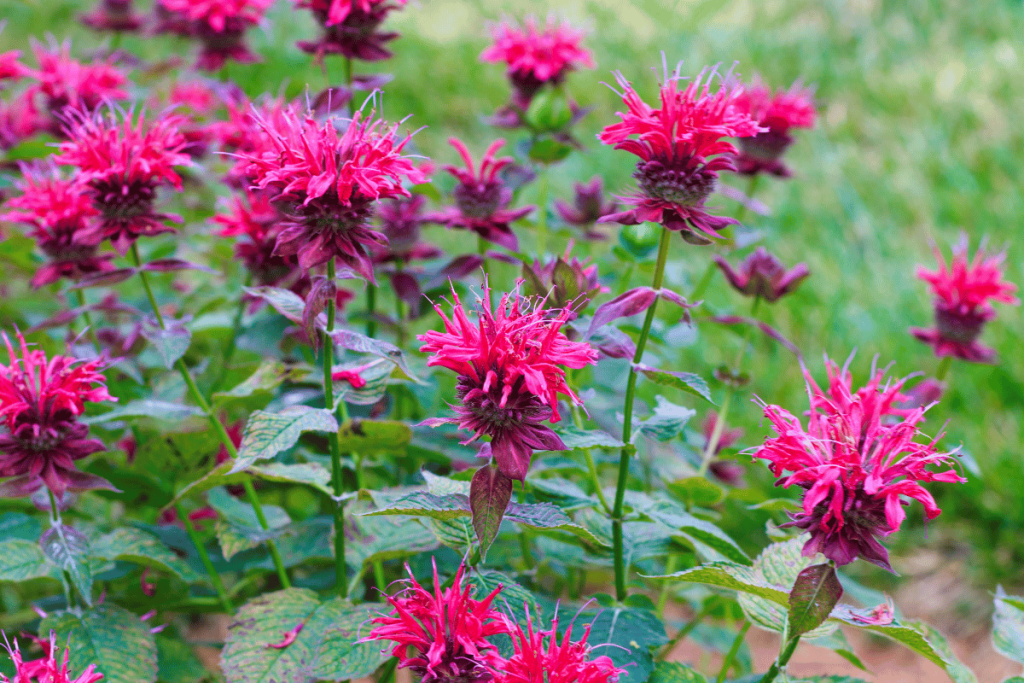
16. Echinacea
Echinacea (Echinacea angustifolia, Echinacea purpurea) is one of the top immune-boosting herbs, helping to build strength and fight disease and infection. It aids the process of antibody formation and stimulates the production of white blood cells (WBCs), helps to strengthen and clear lymph nodes, and inhibits hyaluronidase, thus prohibiting the spread of infection, while also fighting off viral infections.
Parts used are the root, leaf, flower, and even the seed.
It is non-toxic and believed to be harmless but should be used cautiously if you have an autoimmune disorder. Some people can have an allergic reaction and must discontinue use if they experience itchy eyes or ears, runny nose, scratchy throat, or other signs of allergy.
Can be used internally as a standard infusion, tincture, glycerite, in syrups, capsules, and then topically as well.
How to Grow: Echinacea prefers well-drained soil and full sunlight. Start from seeds indoors in early spring or directly sow in the garden. Water regularly until established, and deadhead spent flowers for prolonged blooming.
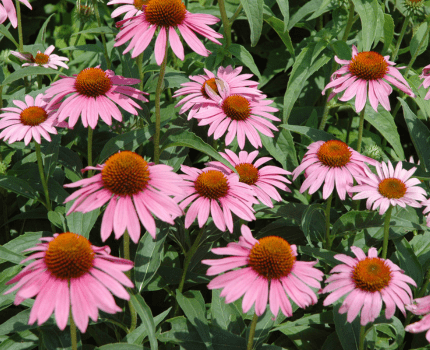
17. Cayenne
Cayenne (Capsicum annuum) is a warming circulatory stimulant, a safe and effective tonic for the heart, and a wonderful digestive aid. One of the main properties is capsaicin, it stimulates circulation throughout the body and aids in digestion by stimulating the release of both saliva and stomach enzymes. It also tells the brain to release endorphins. It has been used topically for pain relief for arthritis, bursitis, and muscle and joint pain. The spicy cayenne pepper is excellent for improving circulation and relieving pain.
Cayenne is also high in vitamins A and C which allows it to help the immune system.
Only the fruit of the plant is edible and medicinal. This is part of the nightshade family.
The only warning for this herb is that it is hot! It is recommended to wear gloves when cutting as the oils can irritate the skin and you can inadvertently get the oils in your eyes with touch even after washing your hands. Too much of this herb can cause stomach convulsions. A little bit of this herb goes a long way.
How to Grow: Cayenne peppers thrive in well-drained, sandy soil and full sunlight. Start seeds indoors and transplant them when the soil has warmed. Water consistently and harvest peppers when mature. This is an annual plant that you can save seeds from and continue every year in your garden for years to come.
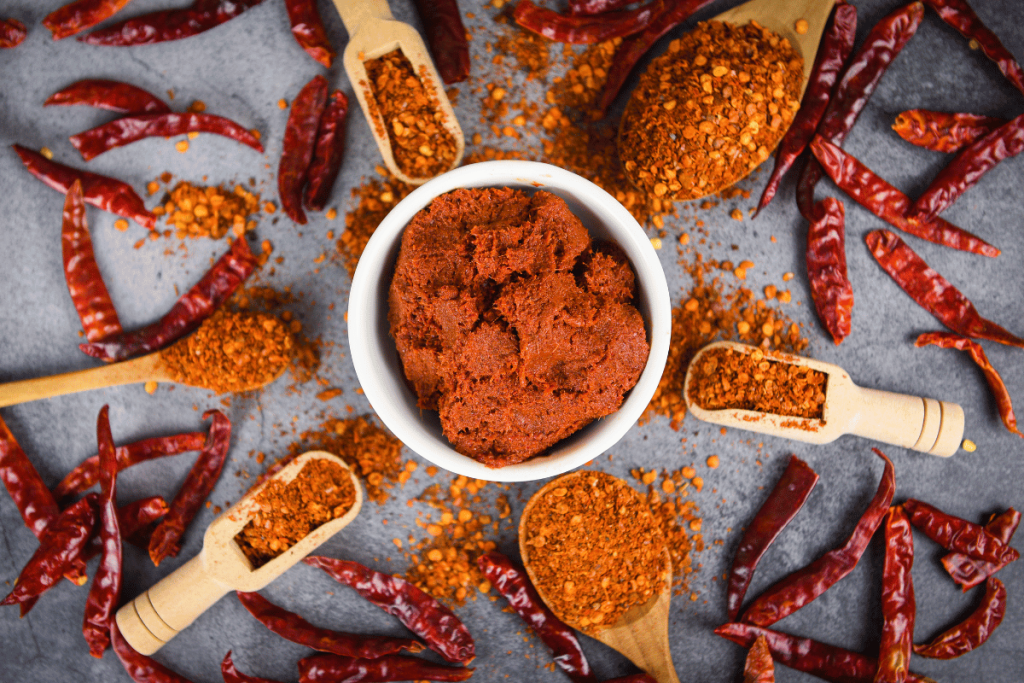
18. Comfrey
Comfrey (Symphytum officinale) has been used for generations to aid in the healing of injuries. It is a mucilaginous herb with a slight astringent quality. Comfrey has important minerals needed for healing, but it also contains allantoin, a substance that stimulates cell growth.
Because it stimulates cell growth, it is not advised to apply if a broken bone is suspected until after it can be set or ruled out.
The leaves of comfrey are used.
It is primarily used externally in compresses, poultices, and salves. It is no longer recommended to use internally because of concerns about hepatic (liver) toxicity.
Many have taken it internally with no side effects reported, and it is probably safe for short periods. It should be avoided internally during pregnancy, lactation, when cancerous tumors are present, or when there is a history of liver problems.
How to Grow: Comfrey prefers moist, well-drained soil and partial sunlight. Plant it from root cuttings or seeds. Regular pruning prevents it from becoming invasive, and the leaves can be harvested for medicinal use. This plant is very easy to transplant and share with your neighbors. Make sure you like where you plant it, as it will likely not be easy to remove.
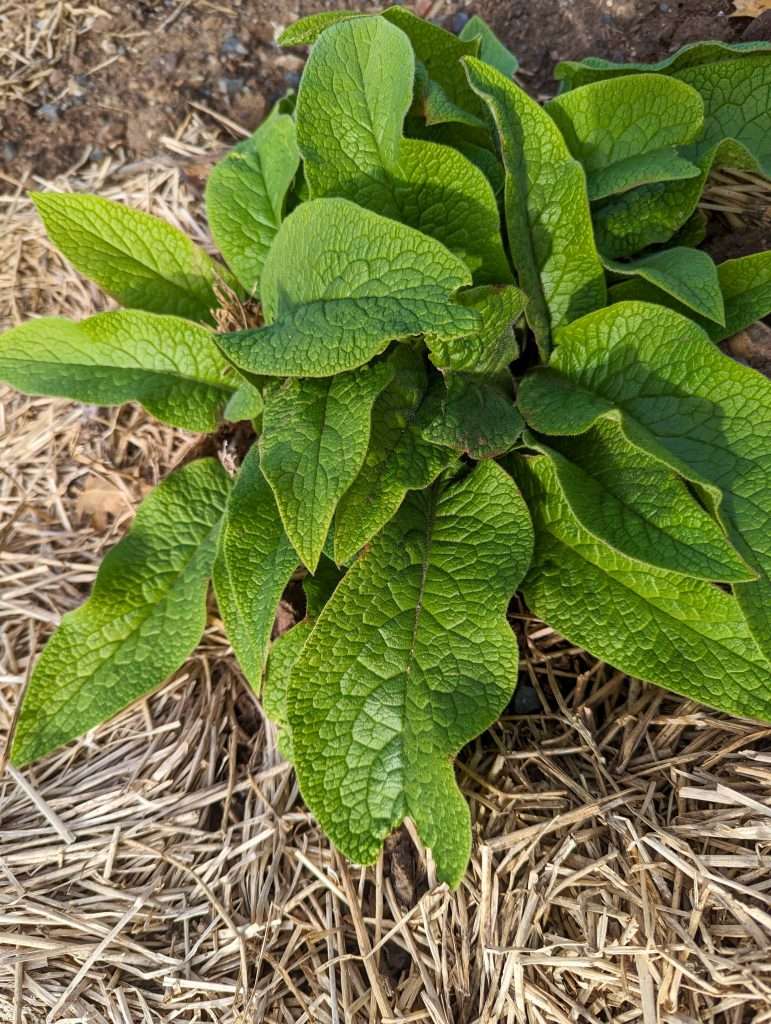
19. Mullein
Mullein (Verbascum thapsus) is both an antispasmodic and an expectorant and because of this, it is valued for its respiratory benefits, making it useful for treating conditions like bronchitis and asthma. It is great for a deep or spasmodic cough, bronchial congestion, chest colds, allergies, and other respiratory ailments.
Mullein is also used for a mild to moderate ear infection caused by the onset of a cold, flu, or other type of upper respiratory infection. See the recipe below this post.
How to Grow: Mullein prefers well-drained soil and full sunlight. Start seeds indoors or directly sow in the garden. Harvest leaves and flowers for medicinal use.

20. Nettle
Nettle (Urtica dioica) is a nourishing herb full of iron, calcium, magnesium, protein, and other nutrients. This is an excellent herb for anemia, low blood pressure (hypotension), and general weakness. Nettle leaf is anti-inflammatory and would work well to ease inflammation postpartum. This herb will also aid in the nutrition of the mother’s breast milk.
This herb can sometimes have a stimulating effect on some women.
Nettle is extremely safe except when trying to harvest a live plant without gloves. It is called “stinging” nettle after all.
Add nettle leaf to any tea or decoction to add its many nutritional benefits.
How to Grow: Nettle prefers rich, moist soil and partial shade. It can be started from seeds or divisions. Wear gloves when handling mature plants, and harvest the leaves before flowering for culinary or medicinal use.
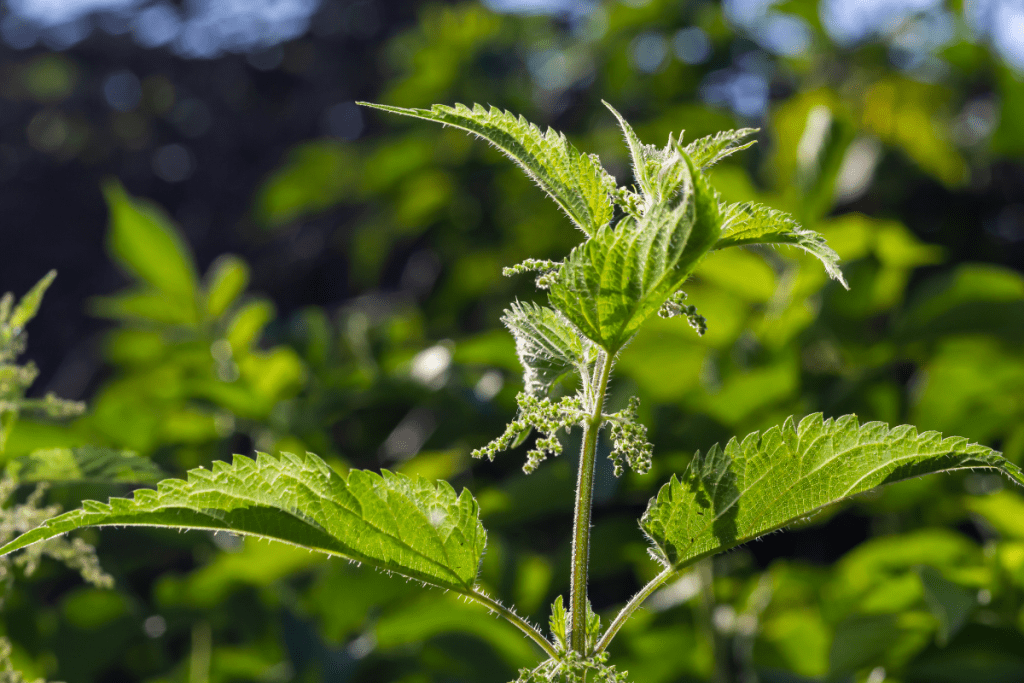
Herbal remedies
Mullein Flower Herbal Ear Oil
For a mild to moderate ear infection caused by the onset of a cold, flu, or other type of upper respiratory congestion, is very effective at fighting an ear infection and also relieving the pain from the infection as well.
Ingredients:
- 1/4 cup mullein flowers
- 1-2 cloves garlic (optional)
- 2 cups carrier oil of choice (olive oil, fractionated coconut oil…etc)
Directions: (see also how to make an herbal oil)
Quick Method (double broiler or crock-pot)
- Add the herbs and cover with your oil of choice by at least 1 inch. The amount of herbs and oil needed will vary on your vessel size.
- Bring the double broiler or crock-pot to a low simmer for at least 30-60 minutes or 100-140 degrees for several hours. I infuse very low heat (100-140 degrees F) for 1-5 hours or until I can smell the herbs. Check frequently to make sure you’re not overheating your herbs. The lower and slower you heat this the better the herbal will be.
- Once the oil has cooled, strain the oil through a mesh strainer, cheesecloth, or muslin cloth. Make sure to squeeze out every last drop of oil you can!
- Add the herbal oil to a clean, dry, and labeled jar/bottle.
- Store in a cool dark place for at least 6 months.
Use:
1. Warm the oil over very low heat in the dropper bottle, about body temperature or slightly less. You don’t want it too hot.
2. Put 2-3 drops in each ear two or three times a day until healed.
Notes: If the ear infection doesn’t improve with the mullein oil within 24 hours, or if it gets worse, you may need to see your healthcare provider for further direction.
This remedy is not suitable for “swimmer’s ear” or other infections caused by water entering the ear canal. It could potentially make it worse if used for this type of infection.
Not recommended for severe infection where there is a suspected eardrum perforation.
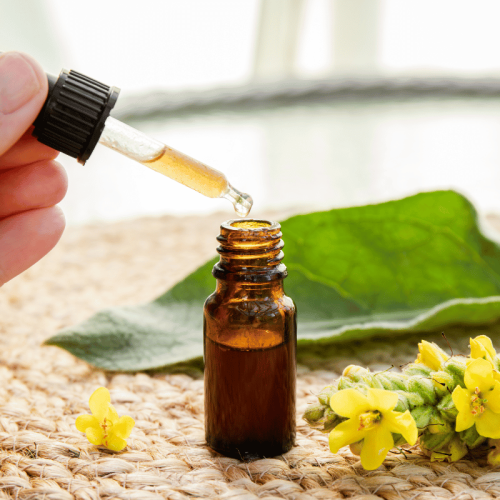
Mullein Flower Herbal Ear Oil
Equipment
- 1 double broiler or slow cooker
- 1 mesh strainer
Ingredients
- 1/4 cup mullein flowers
- 1-2 cloves garlic optional
- 2 cups carrier oil of choice olive oil, fractionated coconut oil…etc
Instructions
Quick Double Broiler Method
- Add the herbs and cover with your oil of choice by at least 1 inch. The amount of herbs and oil needed will vary on your vessel size.
- Bring the double broiler or crock-pot to a low simmer for at least 30-60 minutes or 100-140 degrees for several hours. I infuse very low heat (100-140 degrees F) for 1-5 hours or until I can smell the herbs. Check frequently to make sure you’re not overheating your herbs. The lower and slower you heat this the better the herbal will be.
- Once the oil has cooled, strain the oil through a mesh strainer, cheesecloth, or muslin cloth. Make sure to squeeze out every last drop of oil you can!
- Add the herbal oil to a clean, dry, and labeled jar/bottle.
- Store in a cool dark place for at least 6 months.
Use
- Warm the oil over very low heat in the dropper bottle, about body temperature or slightly less. You don’t want it too hot.
- Put 2-3 drops in each ear two or three times a day until healed.
Video
Notes
These are the best medicinal herbs to grow!
Growing your medicinal herb garden is a step towards a more sustainable and natural approach to health and wellness. Whether you’re sipping on chamomile tea for relaxation or using aloe vera for skin ailments, these top 20 medicinal herbs for beginners offer a diverse range of benefits. Experiment with different herbs to discover their unique properties and find the perfect combination that suits your health needs. Happy gardening!
Let’s connect!
Let me know in the comments below what you have grown or what you plan to grow. Give me an idea of what has worked out well or not for you too! I love to learn from what others are doing as well.
